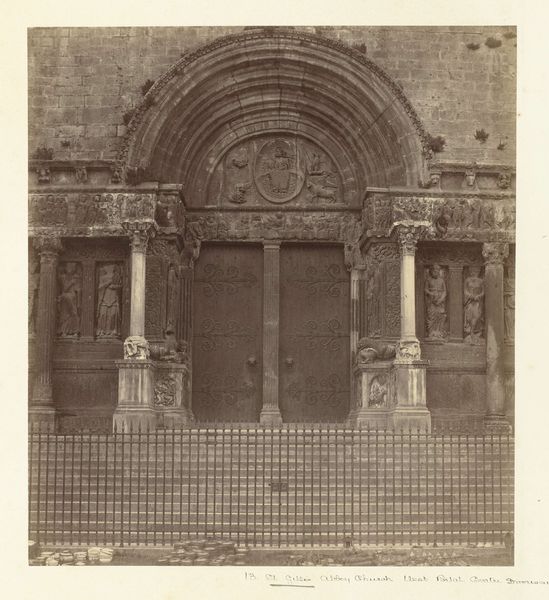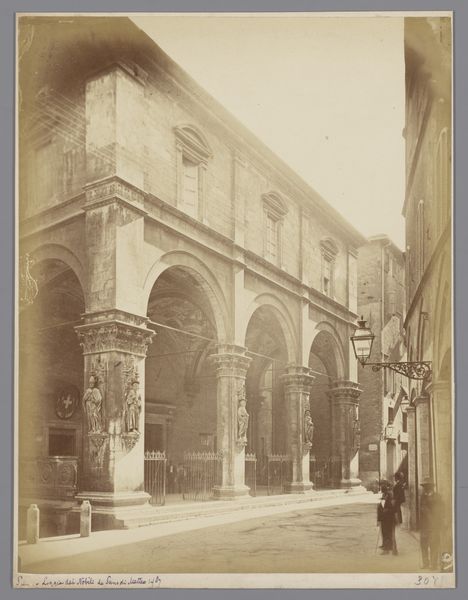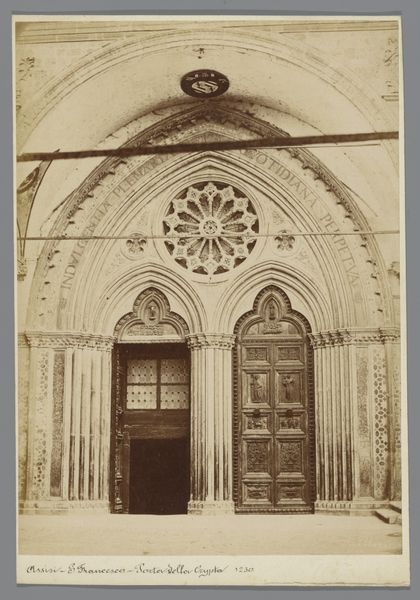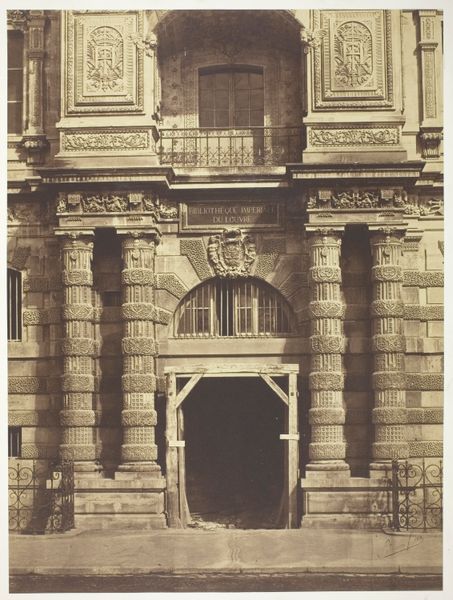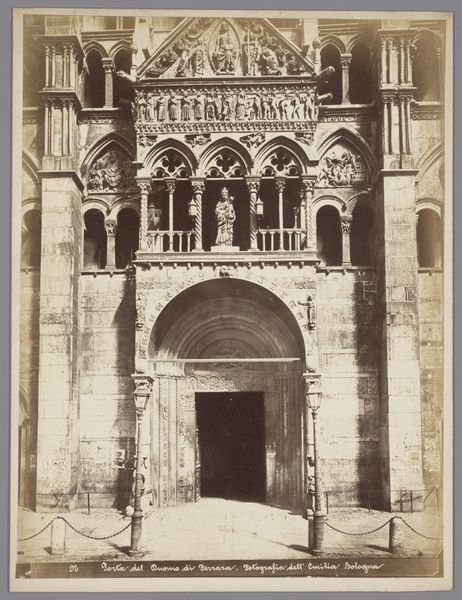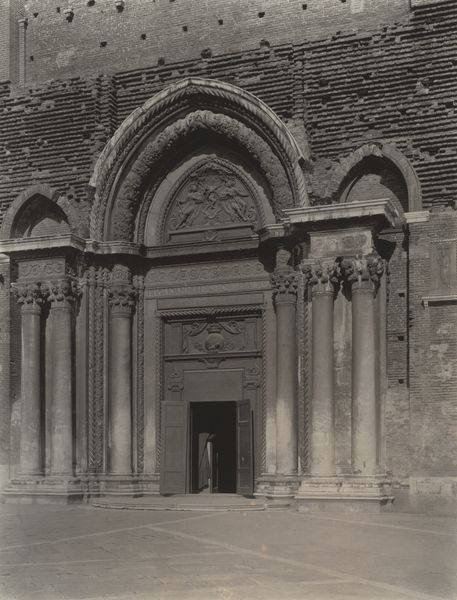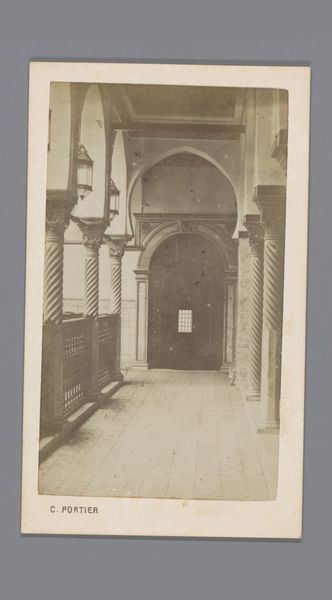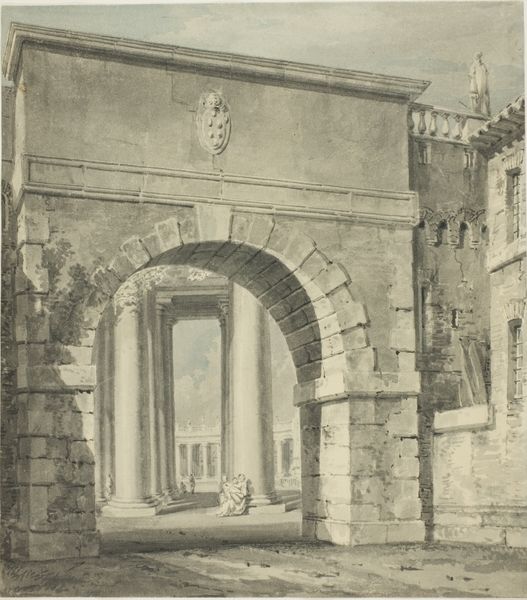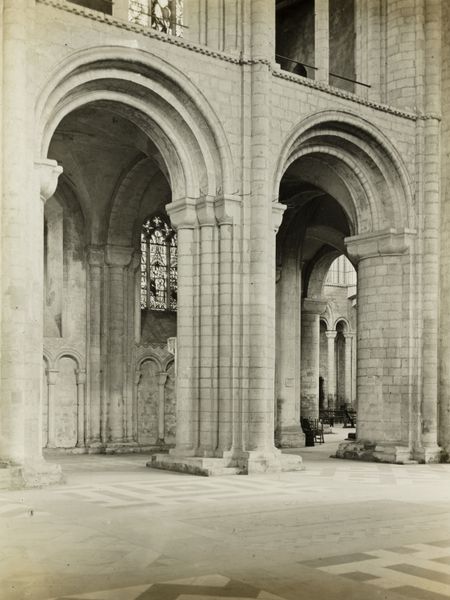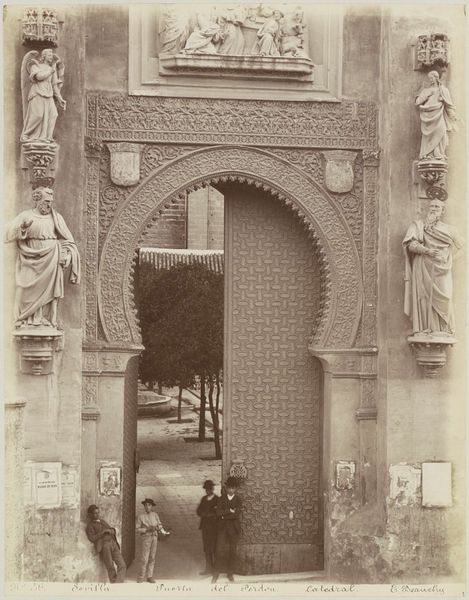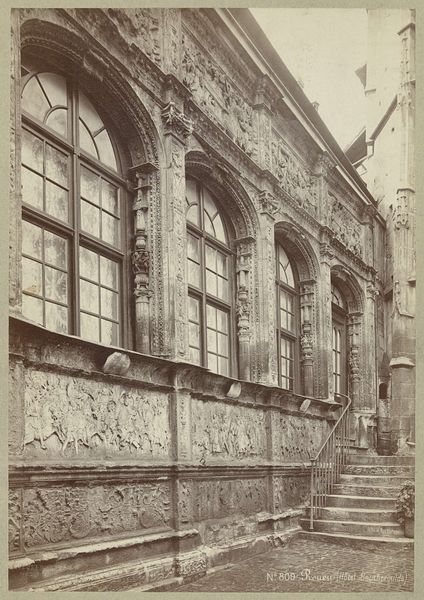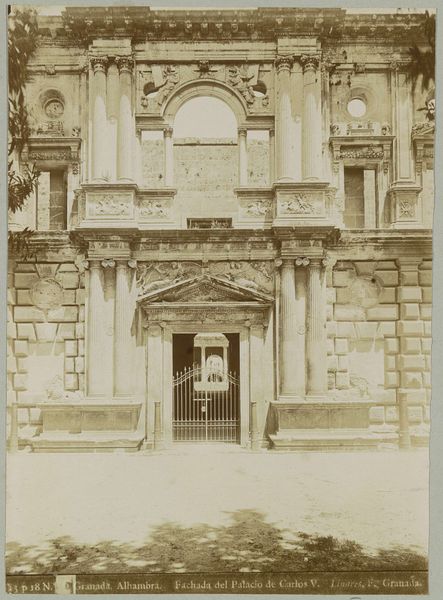
Gezicht op de entrée van de Basiliek Sainte-Marie-Madeleine van Vézelay 1863 - 1865
0:00
0:00
photography, gelatin-silver-print, architecture
#
medieval
#
landscape
#
photography
#
romanesque
#
historical photography
#
unrealistic statue
#
gelatin-silver-print
#
19th century
#
architecture
#
realism
#
statue
Dimensions: height 244 mm, width 226 mm, height 483 mm, width 380 mm
Copyright: Rijks Museum: Open Domain
Editor: This photograph, "Gezicht op de entree van de Basiliek Sainte-Marie-Madeleine van Vézelay," was taken between 1863 and 1865. It's a gelatin silver print depicting the entrance to a basilica. It's impressive, almost monumental, but the lack of human presence gives it an air of solitude. How do you interpret this work? Curator: This image prompts us to consider the power structures inherent in religious architecture and its representation. This basilica, dedicated to Saint Mary Magdalene, became a key pilgrimage site in the Middle Ages. Doesn't this image, created in the mid-19th century, also reinforce certain narratives? Who had access to creating and consuming images like these at the time? Editor: So, the photograph isn't just a neutral record, but a document with its own perspective? Curator: Precisely. Think about the rise of photography alongside the growing fascination with historical sites in the 19th century. This basilica represented a particular version of history, and the act of photographing it, distributing the image, reinforced that. Also, how might Magdalene’s story, often interpreted through patriarchal lenses, be re-evaluated when we consider images like this today? Editor: That’s interesting! I hadn’t considered that. The architectural details felt like the main focus, but the historical context gives it so much more depth. Curator: By understanding the historical and social factors, we can start to ask crucial questions about what narratives are prioritized, what power dynamics are at play, and whose stories are told—or left untold—through images like these. Editor: This makes me want to research the Saint Mary Magdalene basilica and what was happening in France at the time this photo was taken. Thanks so much for sharing your insights.
Comments
No comments
Be the first to comment and join the conversation on the ultimate creative platform.

